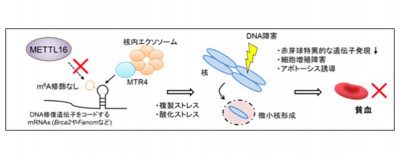2022-11-10 オークリッジ国立研究所(ORNL)
科学者たちは、自閉症の80%は遺伝すると推定していますが、原因となる遺伝子を特定するには至っていません。
多くの構造的変異は従来とは異なる遺伝パターンを示すことが多いため、除外されることを観察したことである。ORNLの科学者たちは、これらの変異に注目し、非言語型の自閉症に関連するACMSD遺伝子の変異を発見した。その後、人工知能とハイパフォーマンス・コンピューティングを用いて、3つの自閉症サブタイプに関連する変異をさらに発見した。
<関連情報>
- https://www.ornl.gov/news/genetic-markers-autism-hiding-plain-sight
- https://www.sciencedirect.com/science/article/pii/S2666247722000677
非メンデル型遺伝パターンを利用して同定された構造変異が自閉症スペクトラム障害のメカニズム解明を前進させる Structural variants identified using non-Mendelian inheritance patterns advance the mechanistic understanding of autism spectrum disorder
David Kainer,Alan R.Templeton,Erica T.Prates,Daniel Jacboson,Euan R.O.Allan,Sharlee Climer,Michael R.Garvin
HGG Advances Available online: 6 October 2022
DOI:https://doi.org/10.1016/j.xhgg.2022.100150

Summary
The heritability of autism spectrum disorder (ASD), based on 680,000 families and five countries, is estimated to be nearly 80%, yet heritability reported from SNP-based studies are consistently lower, and few significant loci have been identified with genome-wide association studies. This gap in genomic information may reside in rare variants, interaction among variants (epistasis), or cryptic structural variation (SV) and may provide mechanisms that underlie ASD. Here we use a method to identify potential SVs based on non-Mendelian inheritance patterns in pedigrees using parent-child genotypes from ASD families and demonstrate that they are enriched in ASD-risk genes. Most are in non-coding genic space and are over-represented in expression quantitative trait loci, suggesting that they affect gene regulation, which we confirm with their overlap of differentially expressed genes in postmortem brain tissue of ASD individuals. We then identify an SV in the GRIK2 gene that alters RNA splicing and a regulatory region of the ACMSD gene in the kynurenine pathway as significantly associated with a non-verbal ASD phenotype, supporting our hypothesis that these currently excluded loci can provide a clearer mechanistic understanding of ASD. Finally, we use an explainable artificial intelligence approach to define subgroups demonstrating their use in the context of precision medicine.


